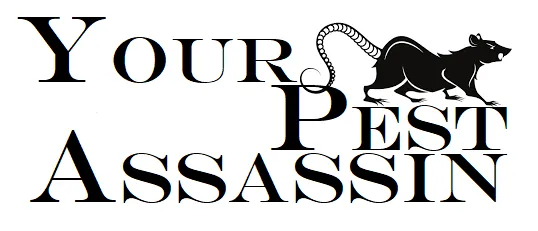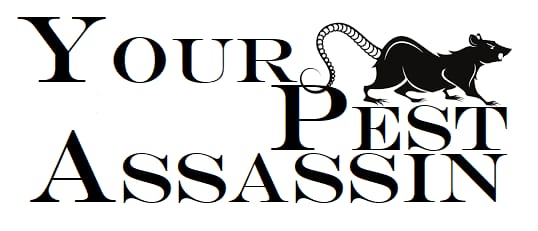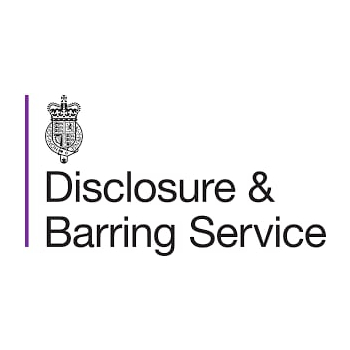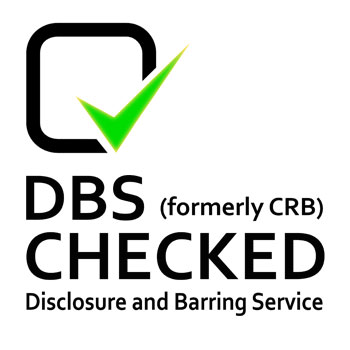Home | Knowledge Base Posts | Everything You Need to Know About Wasp Nest Removal
Wasp Nest Removal
Your Complete Guide To Wasp Nests and Removal Techniques
Wasp Nest Removal Service
Wasp Nest Removal
Fast and Effective Wasp Nest Removal – Your Pest Assassin’s Guaranteed Solution
Your Pest Assassin Offers Same-Day Wasp Nest Treatments and Expert Wasp Nest Removal Services. Act Now for a Swift, Safe Solution!
Call Now on: 07513 039 919
Encountering a wasp nest can be nerve-wracking and dangerous, especially if you consider removing it yourself. Our comprehensive guide aims to educate you about wasp nests, the risks involved in dealing with them, and why calling for professional help is the safest option. Let’s shed light on the best ways to eliminate these unwelcome guests
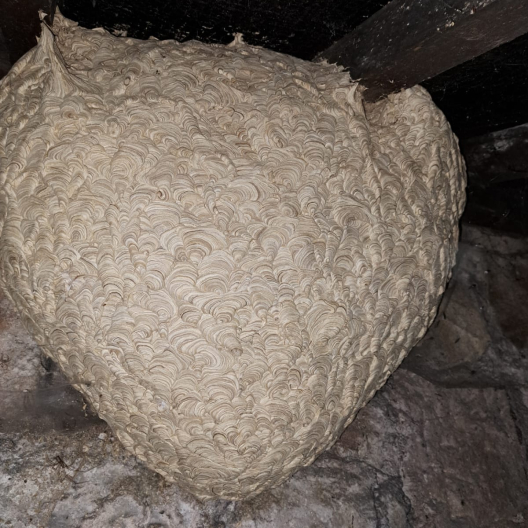
Wasp Infestations: Signs and Treatment Options
It’s important to detect a wasp nest early to prevent potential harm. An infestation is usually indicated by a high number of wasps in your vicinity and frequent sightings of wasps entering or exiting a specific area, such as an opening in your attic or a nook in your garden.
Wasps are often mistaken for bees but are easily distinguishable by their slender and elongated bodies. Unlike bees, wasps are more aggressive and can sting multiple times, making them a significant concern. Wasp nests are usually hidden and hard to spot, often found in lofts, garages, sheds, and under eaves. They are made from chewed wood pulp and saliva, giving them a papery appearance.
Remember, the larger the nest, the more wasps it houses. A larger infestation increases the risk of painful stings. Hence, if you suspect a wasp nest in your vicinity, it’s crucial to reach out to professional wasp nest removal services like Your Pest Assassin. Our professionals are trained to safely remove wasp nests and help you regain your peace of mind.
For dealing with wasp nests, here are several treatment options:
- DIY Wasp Sprays: Multiple over-the-counter sprays are available, which can be effective for smaller nests. However, they pose a risk as you need to get close to the nest. It’s also important to note that these sprays contain chemicals that can be harmful to the environment and other wildlife.
- Smoke: Some people use smoke to get rid of wasp nests. The smoke suffocates the wasps and forces them to evacuate their nest. This method can be effective but is also risky.
- Calling Professionals: The safest treatment option is to hire a professional wasp nest removal service like Your Pest Assassin. Professionals are equipped with the right tools and protective gear and are trained in various removal methods to safely and effectively remove the nest.
- Preventive Measures: While this is not a direct treatment, taking preventive measures can save you from dealing with an infestation in the first place. Regularly inspect your property, seal potential entrances, and maintain cleanliness to deter wasps from building a nest.
Remember that dealing with a wasp nest can be dangerous, and it’s always safer to seek professional help instead of attempting to remove it on your own.
About Wasp Nests
Wasp nests serve as the central hub for the wasp colony and are primarily used for the rearing of young wasps. They are intricate structures built by worker wasps, demonstrating a high level of architectural brilliance seen in nature. The nests are organised into numerous cells where the queen lays her eggs. Upon hatching, these cells are also used to house the larvae and provide them with food until they mature into adult wasps.
What Do Wasp Nests Look Like?
Wasp nests are often mistaken for beehives due to their similar structure.
However, a closer look reveals stark differences. Wasp nests have a round or pear-shaped structure with a papery texture and are usually grey or light brown in colour. This paper-like attribute is a result of the unique construction material used by wasps: a mixture of chewed wood and saliva. Inside the nest, you’ll find a series of hexagonal cells, similar to honeycombs, where the wasps raise their young.
How Do Wasp Nests Start?
A wasp nest begins with a single queen, who starts to build the nest in the spring after emerging from hibernation. The queen lays the first batch of eggs, which hatch into worker wasps. These workers take over the nest-building duties, expanding the nest to accommodate the growing colony. For the rest of her life, the queen focuses solely on laying eggs. The size of the nest continues to grow throughout the summer and can house thousands of wasps at the peak of the breeding season.
Remember, dealing with a wasp nest is not a do-it-yourself task due to the risks involved. If you encounter a wasp nest in your surroundings, we strongly advise contacting professional wasp nest removal services like Your Pest Assassin.
Do I have bees or wasps?
Identifying whether you’re dealing with bees or wasps can often be a source of confusion due to their similar appearances. However, recognising the difference is crucial because the removal methods for the two species vary greatly, and mistaking one for another could escalate the situation, posing a danger to you and the insects involved. This section aims to provide you with the necessary insights to help you distinguish between a bee and a wasp infestation.
Wasps: Characteristics and Behaviour
Wasps exhibit distinctive characteristics that set them apart from bees. They have slender bodies with a narrow waist, smooth skin and are typically black, brown or red in colour, often with yellow or white markings. The size of a wasp can vary from a few millimetres to over an inch long, depending on the species.
Unlike bees, wasps can sting multiple times without dying, making them more dangerous during an encounter. In terms of behaviour, wasps are also more aggressive and protective of their nests. If you spot several wasps flying in and out of a hole in your garden or notice a papery structure in your attic, it’s a clear sign of a wasp infestation.
Bees: Characteristics and Behaviour
Conversely, Bees have a more rounded and hairy body, usually with black and yellow stripes. Unlike wasps, they have a barbed stinger, which means they can only sting once. After stinging, the bee dies, making them less aggressive than wasps.
Most bees are social creatures and live in well-organised colonies. They build hives out of wax, in contrast to the paper-like nests of wasps. You likely have a bee infestation if you observe bees frequently visiting flowers in your garden and see a waxy structure.
Identifying whether you have a wasp or bee infestation is crucial, as each removal method is different. Attempting to remove a wasp nest as if it were a bee hive can lead to unnecessary risk. If you’re unsure, it’s always best to consult a professional pest control service like Your Pest Assassin.
Remember, whether you’re dealing with wasps or bees, both can pose risks to people, especially those with allergies. Therefore, seeking professional help is always safer than tackling the nest yourself.
Is removing a wasp nest necessary?
The necessity of wasp nest removal cannot be understated. Wasps pose a significant threat to the safety of individuals, especially those with allergies to wasp stings. A wasp nest in close proximity to your living or working space can lead to increased encounters with these aggressive insects, heightening the risk of painful stings. Moreover, a wasp nest left unchecked will continue to grow in size throughout the summer, with the potential to house thousands of wasps at its peak.
The presence of a nest can also inhibit the enjoyment of outdoor spaces, as the fear of disturbing the nest can make gardens or patios no-go areas. Additionally, if the nest is within the structure of your property, the continual growth and activity of the wasps can lead to property damage over time.
It’s noteworthy to mention that wasp nests are typically used for a single year, after which they are abandoned. However, the presence of an old nest can attract new queens looking for a suitable location to start their own colony. Therefore, the prompt removal of a wasp nest, whether active or inactive, is paramount for immediate safety and the prevention of future infestations. Always consider engaging professional wasp nest removal services like Your Pest Assassin for a safe and effective solution.
Get rid of wasp nest DIY style.
While Your Pest Assassin strongly advises against attempting to remove a wasp nest by oneself due to the inherent risks involved, we understand the curiosity and subsequent need for understanding the process. The following steps are typically involved in a do-it-yourself wasp nest removal. Please note that these steps are NOT a recommendation but rather for educational purposes to underline the complexity and potential danger of the task.
Step 1: Gather your protective clothing and gear.
Understanding the Risks
Before discussing the protective clothing needed, it is crucial to understand the potential dangers associated with wasp nest removal. Wasps are highly defensive creatures, especially when their nest is threatened. Unlike bees, wasps can sting multiple times, and they do not die after stinging. This means that disturbing a nest can result in multiple painful stings in a short span of time.
Severe reactions to wasp stings can include extreme pain, swelling, dizziness, and in extreme cases, anaphylactic shock, which can be fatal. Even individuals who have not previously reacted severely to a sting can experience a serious reaction if stung multiple times.
Protection is Key
To minimise the risk of stings, wearing the correct protective clothing is vital when attempting to remove a wasp nest. This includes a full-body suit made of thick material that wasps cannot sting through, gloves that extend beyond the wrists, and a veil to protect your face and neck. The suit should be sealed at all junctions to prevent wasps from crawling inside. It’s also vital to wear closed-toe shoes or boots with the trouser legs taped down to prevent wasps from entering.
Remember, even with the correct protective clothing, you’re still at risk of being stung, especially if you’re dealing with a large nest. The safer and more effective solution is always to hire a professional wasp nest removal service like Your Pest Assassin. We have the expertise and equipment to remove nests safely and efficiently.
Step 2: Locating the Wasp Nest
Locating the wasp nest is a critical and often challenging part of removal. Wasp nests can be hidden in various locations, often out of sight or in hard-to-reach areas. This task requires careful observation and a keen eye for detail.
Identifying Wasp Activity
One common way to locate a wasp nest is by observing the flight path of the wasps during the day. Wasps often fly in a straight line to and from their nest. By carefully watching their activity, you may be able to trace the flight path back to the nest.
However, keeping a safe distance while observing is essential to avoid provoking the wasps. Wasps are highly protective of their nests and can become aggressive if they perceive a threat.
Common Nest Locations
Wasp nests can be found in various places around your home or property. They are commonly built in lofts, attics, garages, sheds, under eaves, or wall cavities. Wasps generally prefer areas that are sheltered from the elements and predators. Therefore, nests can also be underground in old rodent burrows or thick vegetation.
Hard-to-Reach Nests
Many wasp nests are situated in hard-to-reach or hazardous locations. This could include high up in trees, inside wall cavities, or even within structures like air vents. In such cases, locating the nest becomes even more complex and potentially dangerous. Attempting to reach these nests can result in personal injury or damage to your property.
Professional Help is Recommended
Given the difficulty and potential danger of locating a wasp nest, it’s often best to enlist the help of professionals. Pest control services like Your Pest Assassin have the experience and tools to safely locate and assess the severity of a wasp nest infestation. They can also provide effective treatment options tailored to your specific situation.
Dealing with wasps can be dangerous, especially if a nest is disturbed. If you suspect a wasp nest in your property, we strongly advise getting in touch with professional wasp nest removal services like Your Pest Assassin.
Step 3: Identify the Type of Wasp You're Dealing With
Before proceeding with any removal efforts, it’s crucial to identify the type of wasp you’re dealing with accurately. Not all wasps are created equal, and different species may require different removal strategies. Moreover, when disturbed, some species are more aggressive than others, which could increase potential risks.
Common Types of Wasps
In the UK, the most common types of wasps you might encounter include the Common Wasp (Vespula vulgaris) and the German Wasp (Vespula germanica). Both these species are social wasps, meaning they live in large colonies and can become extremely aggressive if their nest is threatened.
Another species that is often mistaken for a wasp is the European Hornet (Vespa crabro). While these insects are more giant and intimidating, they are generally less aggressive unless provoked by their smaller counterparts.
Wasp Type: Yellow Jackets
Yellow Jackets (Vespula spp. and Dolichovespula spp.) are a type of social wasp that are commonly mistaken for bees due to their similar size and colouring. They are called Yellow Jackets because of their distinctive yellow and black banded abdomen, which is noticeably brighter than the muted yellow of the Common Wasp. These wasps are particularly prevalent in the United States but can also be found in various regions of Europe.
Yellow Jackets typically measure about 10 to 16 millimetres in length. They build nests that are similar to those of the Common Wasp, but their nests are often larger and can house colonies of up to 4,000 workers. The nests are usually located underground, in hollow trees, or in human structures such as attics or wall cavities.
What differentiates Yellow Jackets from other wasp species is their aggressive behaviour, especially when their nest is disturbed. They are known to sting repeatedly, and unlike bees, they don’t lose their stinger, making each individual wasp capable of multiple stings. These stings can be painful and, in some cases, provoke severe allergic reactions.
If you come across a nest that you believe belongs to Yellow Jackets, contacting a professional wasp nest removal service like Your Pest Assassin is strongly advised. Given their aggressive nature, Yellow Jackets pose a significant risk to those attempting to remove their nest without professional help.
Wasp Type: Hornets
Hornets (Genus Vespa) are a type of insect that are part of the Vespidae family, which also includes other wasps, yellow jackets, and bees. Hornets are distinguished by their size and their striking colours. The most common species in the UK is the European Hornet (Vespa crabro), which is the largest eusocial wasp native to Europe. These insects can reach up to 3.5 centimetres in length and are recognisable by their yellow and brown striped abdomen.
Hornets are typically found in wooden areas, as they prefer to nest in tree trunks, walls, or in the ground. Their nests, made out of chewed bark and saliva, are paper-like and can house a colony of up to 700 workers. Hornets are less common in urban places, but occasionally, they can build nests in wall cavities, attics, or under the roofs of buildings.
Like other wasps, hornets are generally not aggressive unless provoked. However, when they sting, it can be more painful than a typical wasp sting due to the chemicals in their venom. Hornets’ stings carry a risk of allergic reactions, and multiple stings can be medically severe. Thus, it’s crucial to approach a hornet’s nest with extreme caution.
If you come across a nest you believe belongs to hornets, do not approach or disturb it. Due to the potential risks involved, we strongly recommend contacting a professional wasp nest removal service like Your Pest Assassin. Our team of experts can accurately identify the type of wasp and safely remove the nest, ensuring your and your family’s safety.
Wasp Type: Paper Wasps
Paper wasps (Genus Polistes) are another type of insect within the Vespidae family, named after their unique nests made of chewed plant fibres mixed with saliva, resembling paper. These wasps, with over 200 species, are found globally and are commonly observed in North America, Europe, and Asia.
Paper wasps usually measure 1.8 to 2.5 centimetres in length, and their slender bodies have a narrow waist. Their brownish colour can identify them with yellow or reddish markings. Paper wasps are notably less aggressive compared to Yellow Jackets and Hornets and only attack or sting if they feel threatened or their nest is disturbed.
The nests of Paper Wasps are often built in elevated areas, like tree branches, porch ceilings, eaves, and window frames. The nests, with open combs and a distinctive umbrella shape, are smaller compared to those of other wasp species, typically housing a colony of 20 to 30 workers.
Despite their relatively peaceful nature, a sting from a Paper Wasp can still be very painful and may trigger allergic reactions in specific individuals. Additionally, the location of their nests in high, frequently-used areas can make them a nuisance.
If you identify a nest in your property belonging to Paper Wasps, refrain from disturbing it. The recommended course of action is to contact a professional wasp nest removal service like Your Pest Assassin. Our team is equipped with the necessary knowledge, tools, and protective gear to safely and efficiently remove the nest, mitigating any risks to your safety.
Wasp Type: Mud Daubers
Mud Daubers (Family Sphecidae) are a type of wasp known for their distinctive nests and solitary lifestyle, making them quite different from the social wasp species we’ve discussed thus far. There’s a variety of species within the Mud Dauber family, found in many regions across the globe.
Mud Daubers are typically black or metallic blue and can measure up to 2.5 centimetres in length. They have a slim, thread-like waist, a characteristic unique to Mud Daubers, making them easy to identify.
Unlike social wasps, Mud Daubers are solitary insects, and their behaviour is relatively passive. They are not typically aggressive and tend to avoid human interaction, stinging only when provoked or handled directly. The sting, while painful, is generally less severe than those from social wasps.
Mud Daubers construct their nests from mud (hence their name), often found on the sides of buildings, under eaves or in garages and sheds. The nests comprise tubular cells that are provisioned with spiders, which serve as food for the wasp larvae.
Although Mud Daubers are less of a threat compared to social wasps, their mud nests can be unsightly and, if located near human activity, can cause concern. If you discover a Mud Dauber’s nest on your property, contacting a professional wasp nest removal service like Your Pest Assassin is recommended. Our trained professionals can safely remove the nest, ensuring that Mud Daubers do not become a persistent problem for your household.
Step 4: Choose Your Wasp Removal Battle Plan
Once the species has been correctly identified, the next step is to formulate an effective removal strategy. Each type of wasp has unique behaviours and characteristics that need to be taken into account when devising a removal plan.
The primary consideration in removing a wasp nest is safety. Whether the nest is located in a high-traffic area, in an out-of-reach location, or in a place with the potential for structural damage, each scenario presents its own challenges and risks.
At Your Pest Assassin, we use a range of proven methods for wasp nest removal, depending on the species and location of the nest. These may include the use of protective suits, extension poles, or specific insecticides. In all cases, we aim to minimise disturbance to the wasps to prevent aggressive behaviour whilst ensuring the nest is completely eliminated.
Remember, attempting to remove a wasp nest on your own can be dangerous and may result in severe consequences if not done correctly. We strongly advise leaving this task to trained professionals with the experience and equipment to do the job safely and efficiently.
In the event of a wasp infestation, getting professional help from Your Pest Assassin ensures that the wasp nest removal process is handled safely and effectively. With our expertise and commitment to service, you can rest assured that your wasp problem will be a thing of the past.
The Boiling Water Method: A Highly Risky Approach
The boiling water method is a common approach some people use when attempting to remove a wasp nest, although we strongly advise against it. The process involves pouring boiling water directly into the nest during nighttime when the wasps are less active. However, this method poses significant risks.
Firstly, it’s essential to understand that wasps can sting multiple times, unlike bees. Disturbing their nest with boiling water can provoke an aggressive response, leading to multiple painful stings. This is even more dangerous for those with allergies to wasp stings, as it can lead to severe allergic reactions.
Secondly, pouring boiling water can also result in severe burns, not just from the water itself, but also from the steam it generates. And thirdly, if the nest is located in a hard-to-reach place, there is a risk of slipping or falling while trying to carry and pour the boiling water.
Lastly, this method is often ineffective in fully eliminating the wasp colony. Wasps may rebuild their nest, leading to a recurring problem.
The risks involved in this method far outweigh any potential benefits. At Your Pest Assassin, we emphasise the importance of leaving wasp nest removal to professionals. Our team is trained to handle such situations safely and effectively, ensuring the complete eradication of the wasp nest while prioritising your safety.
The Water and Soap Method: Another Dangerous DIY Approach
Another home remedy that people often resort to when faced with a wasp nest is the water and soap method. This involves mixing water and dish soap and spraying it directly on the nest or wasps. While this method might seem simple and harmless, it can actually pose substantial risks.
To begin with, the soapy water method requires you to get close to the wasp nest to spray the mixture effectively. This proximity to the nest increases the likelihood of being stung multiple times. Remember, wasps can repeatedly sting when they feel threatened, or their nest is under attack.
Moreover, spraying water might not reach the core of the nest, rendering this method ineffective in completely eradicating the wasp colony. Consequently, surviving wasps may rebuild the nest, leading to a recurring problem.
Additionally, if the nest is located high up or in hard-to-reach areas, there is a significant risk of falling or slipping during the process. Not to mention, the water and soap mixture can lead to damage if it comes into contact with certain materials or surfaces.
In conclusion, whilst the water and soap method may seem like a simple solution, its risks make it a dangerous and often ineffective approach. At Your Pest Assassin, we strongly advise against DIY wasp nest removal and recommend seeking professional help. With our expert team, advanced equipment, and proven methods, we ensure that wasp nest removal is conducted safely and effectively.
The Pesticide Spray Method: An Unsafe DIY Option
The Pesticide Spray method is another DIY approach that people often resort to when dealing with a wasp nest. This method involves using over-the-counter pesticides sprayed directly onto the wasps or their nest. While it may seem straightforward to deal with the problem, this method is fraught with dangers and potential issues.
The primary risk with the Pesticide Spray method is the potential for immediate retaliation from the wasps. Wasps are incredibly protective of their nests and will respond aggressively if they perceive a threat. Spraying pesticides can trigger this defensive behaviour, potentially leading to multiple painful stings.
Moreover, pesticides can have harmful effects on humans and pets. Inhaling the chemicals or exposure to the skin and eyes can cause a range of health problems, from minor irritation to more severe issues like respiratory distress and allergic reactions. It’s also worth noting that most over-the-counter pesticides are non-specific, meaning they can harm other beneficial insects and disrupt the local ecosystem.
Additionally, similar to the water and soap method, this approach requires you to be close to the wasp nest, increasing the risk of stings and potential falls from attempting to reach nests in higher or tricky locations.
Lastly, store-bought pesticides may not be powerful enough to eliminate the entire wasp colony. Surviving wasps can rebuild the nest, creating a recurring infestation problem.
In light of these risks, it’s clear that the Pesticide Spray method is a hazardous and often ineffective solution. At Your Pest Assassin, we strongly recommend against trying to remove a wasp nest on your own. Our professional team is equipped with the right tools and knowledge to carry out wasp nest removal safely and effectively, prioritising your safety and complete eradication of the wasp nest.
Step 5: Timing Your Attack: Crucial in DIY Wasp Nest Removal
Timing is incredibly important when attempting a DIY wasp nest removal, although we strongly advise against such an approach. Nonetheless, if you decide to proceed, it’s crucial to understand why timing matters.
Wasps are less active during cooler temperatures; hence early morning or late evening, when the temperature drops, is the most strategic time to plan your attack. Wasps have poor vision in low light conditions and tend to stay inside their nest, making them somewhat less of a threat.
However, timing your attack doesn’t guarantee safety or success. Even in reduced light and cooler temperatures, disturbing a wasp nest can trigger an aggressive response. Wasps are known to defend their nests fiercely, and a swarm of agitated wasps can lead to multiple painful stings.
Additionally, if only a part of the wasp colony is eliminated and the queen survives, she can rebuild the nest and reproduce rapidly, leading to a recurrent wasp problem. Timing your attack might help you initially, but it does not assure complete eradication of the wasp colony.
At Your Pest Assassin, we cannot emphasise enough the importance of entrusting a professional with wasp nest removal. Our team has the training, protective gear, and specialist tools to safely and effectively remove wasp nests at any time of day, minimising risks while ensuring the complete elimination of the wasp colony.
How Not to Remove a Wasp Nest: Debunking Myths and Dangerous Methods
Over time, numerous methods and myths have circulated about DIY wasp nest removal. However, these often do more harm than good, posing serious threats to your safety and the environment. This section debunks some common misconceptions and explains why these methods are best avoided.
The Burning Method: A Hazardous Misstep
A particularly perilous myth is that setting a wasp nest alight will effectively eliminate the colony. However, this method is exceedingly dangerous and should never be attempted. Not only are you risking severe burns and a potential fire hazard to your property, but the smoke and heat could also agitate the wasps, causing them to attack defensively. Furthermore, this method poses significant environmental risks and is likely to be ineffective as wasps deep within the nest may survive.
The Clubbing Method: An Aggressive, Reckless Approach
Another flawed idea is the belief that hitting or clubbing the nest will destroy it. This method is tremendously risky as it will undoubtedly provoke a fierce defensive reaction from the wasps. The sudden, aggressive disturbance of their nest can lead to a swarm of wasps stinging repeatedly, leading to a severe health risk. Moreover, parts of the nest could remain intact, allowing surviving wasps to rebuild.
The Drowning Method: An Inhumane, Unreliable Technique
The concept of removing a wasp nest by drowning it in water is another ill-advised technique. It involves hosing the nest or submerging it in water, but this method often proves ineffective as it fails to reach wasps nestled deep within. Besides, it’s inhumane and could lead to the unnecessary suffering of wasps. Further, it poses the same threats of defensive attacks and partial nest survival.
At Your Pest Assassin, we urge you to avoid these and other DIY methods for wasp nest removal. Wasp behaviour can be unpredictable, and their reactions to perceived threats can be severe. Our professional team uses safe, humane and effective techniques, ensuring your safety and the complete eradication of the wasp nest. We also prioritise the responsible treatment of wasps and other pests, balancing pest control needs with environmental considerations.
How to Prevent Wasps from Nesting on Your Property
It’s always easier to prevent wasps from nesting on your property than to remove a fully established nest. Implementing the proper preventive measures can significantly reduce the chances of a wasp infestation. Here, we’ll share some practical and effective strategies applicable to both residential and commercial properties.
Maintain Your Property
Regular maintenance is crucial in keeping wasps away. Seal all cracks and crevices on your property. Pay special attention to the areas around windows and doors and the roof where wasps commonly build their nests. Ensure all vents are covered with fine mesh to prevent wasps from entering.
Manage Your Waste
Proper waste management is essential. Wasps are attracted to discarded food, especially sugary substances. Ensure all rubbish bins have tight-fitting lids and are emptied regularly.
Plant Wasp Repelling Plants
Certain plants are known to deter wasps. They include wormwood, eucalyptus, and citronella. Integrating these plants into your landscape design can help fend off wasps.
Limit Food Exposure
During a BBQ or picnic, keep food covered as much as possible. Food, especially that which is sweet, attracts wasps.
Same-Day Wasp Nest Treatment by Your Pest Assassin
Are you still worried about a wasp nest on your property? There’s no need to panic. Your Pest Assassin offers same-day wasp nest treatment services to swiftly and professionally address your concerns. Our expert team will not only treat the wasp nest but will also take the time to educate you on effective preventive measures, ensuring that your property remains wasp-free in the future.
Remember, your safety is our priority, and we are committed to providing you with a fast, humane, and efficient solution to your wasp problem. Don’t take the risk of tackling a wasp nest on your own; trust the professionals at Your Pest Assassin for safe and effective wasp nest removal.
We recommend using our services as we have a wealth of knowledge and experience on dealing with these problems on a regular basis. We have access to high-grade professional insecticides that are not obtainable to the general public and we have top grade equipment and protective clothing to safely undertake the work with minimal risk. We are very reasonably priced in the market, so you can rest assured you are getting the best service at the best price.
